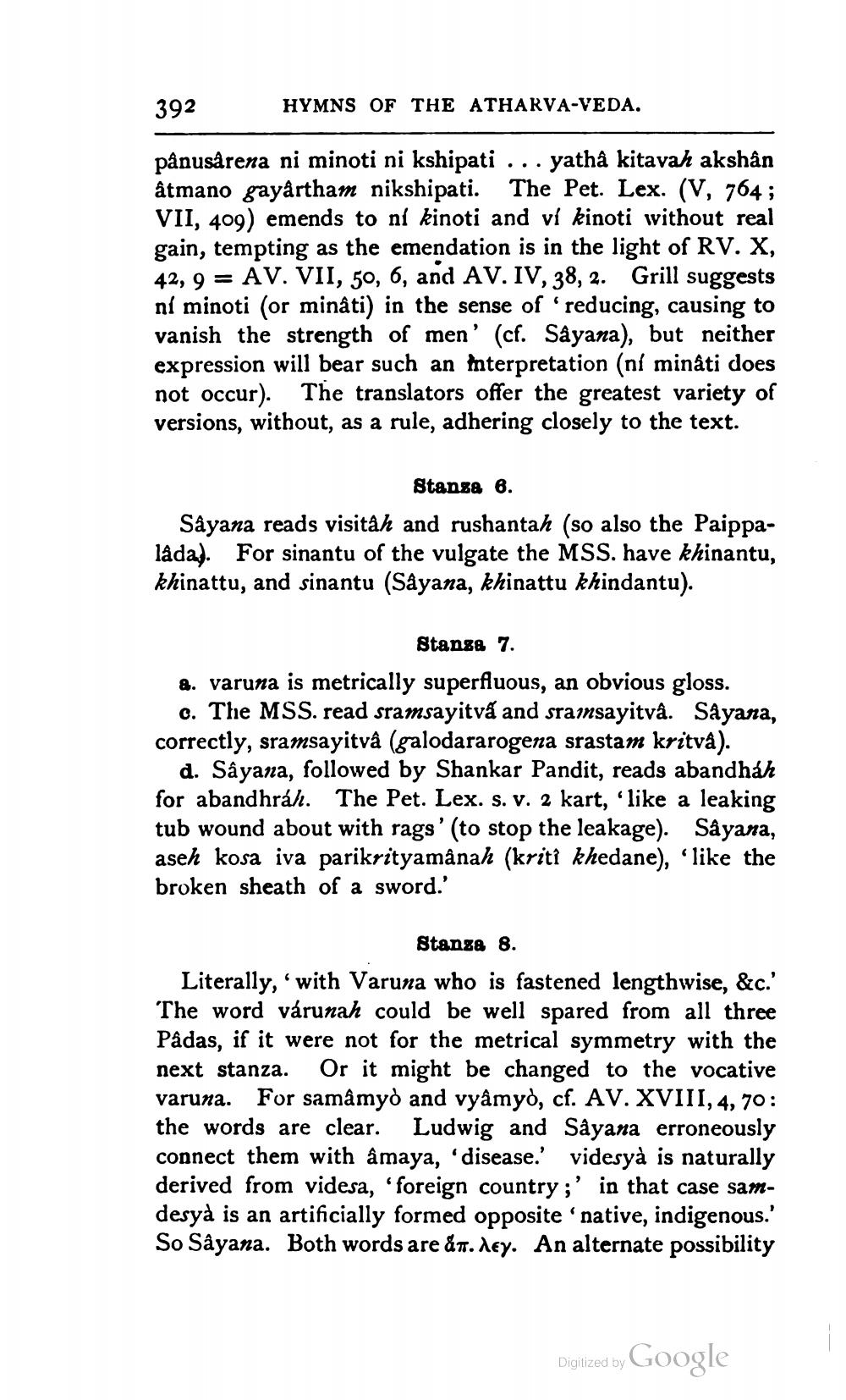________________
392
HYMNS OF THE ATHARVA-VEDA.
pânusårena ni minoti ni kshipati ... yathả kitavah akshan åtmano gayártham nikshipati. The Pet. Lex. (V, 764; VII, 409) emends to ni kinoti and ví kinoti without real gain, tempting as the emendation is in the light of RV. X, 42, 9 = AV. VII, 50, 6, and AV. IV, 38, 2. Grill suggests ni minoti (or minâti) in the sense of 'reducing, causing to vanish the strength of men' (cf. Sâyana), but neither expression will bear such an interpretation (ní minâti does not occur). The translators offer the greatest variety of versions, without, as a rule, adhering closely to the text.
Stanga 6. Såyana reads visitåh and rushantah (so also the Paippalådal. For sinantu of the vulgate the MSS. have khinantu, khinattu, and sinantu (Sảyana, khinattu khindantu).
Stansa 7.
4. varuna is metrically superfluous, an obvious gloss.
c. The MSS. read sramsayitva and sramsayitva. Sayana, correctly, sramsayitvå (galodararogena srastam kritvå).
d. Sâyana, followed by Shankar Pandit, reads abandhah for abandhráh. The Pet. Lex. s. v. 2 kart, like a leaking tub wound about with rags' (to stop the leakage). Såyana, aseh kosa iva parikrityamânah (kriti khedane), 'like the broken sheath of a sword.'
Stanza 8. Literally, with Varuna who is fastened lengthwise, &c.' The word várunah could be well spared from all three Padas, if it were not for the metrical symmetry with the next stanza. Or it might be changed to the vocative varuna. For samâmyò and vyâmyè, cf. AV. XVIII, 4, 70: the words are clear. Ludwig and Sâyana erroneously connect them with âmaya, 'disease.' videsyà is naturally derived from videsa, 'foreign country ;' in that case samdesyà is an artificially formed opposite 'native, indigenous.' So Sâyana. Both words are &t. dey. An alternate possibility
Digized by Google
Digitized by




